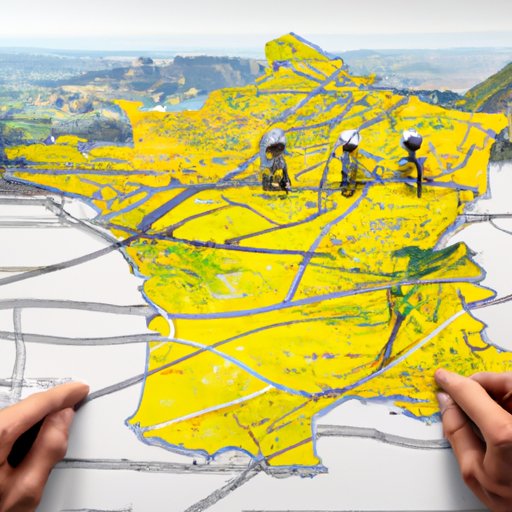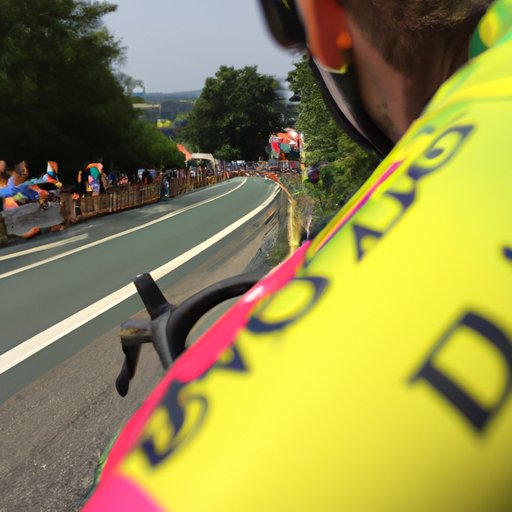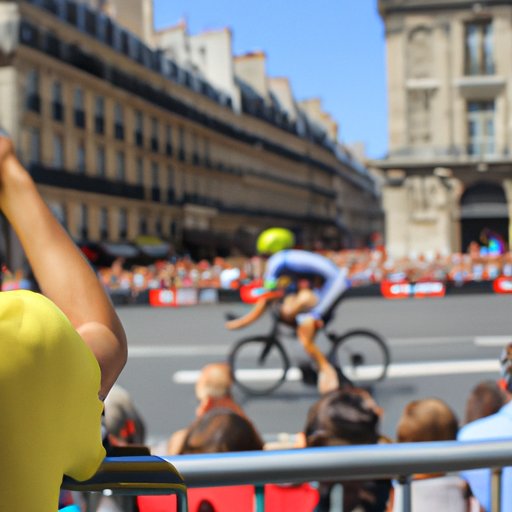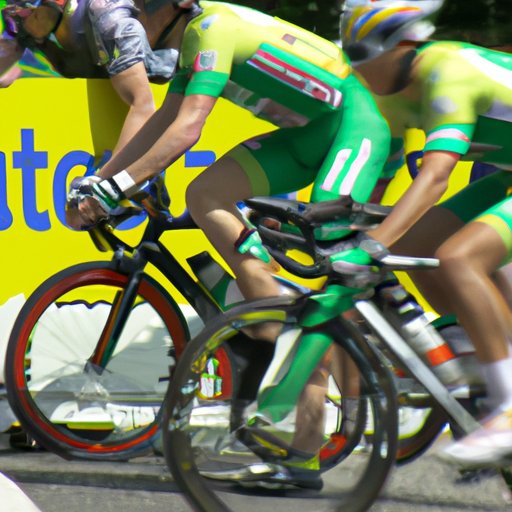Introduction
The Tour de France is the world’s most famous bicycle race, and is viewed by millions of people around the globe each year. It is a grueling race that tests the strength, endurance, and mental toughness of the cyclists that compete in it. In this article, we will explore how the Tour de France works, from its history and course to the strategy and preparation required to succeed. We will also examine the impact of the race on cycling culture.
A Summary of the Tour de France: History, Course and Rules
The Tour de France was first held in 1903 as a publicity stunt for the French newspaper L’Auto. Since then, the race has grown into one of the most prestigious events in the world of cycling. The race consists of 21 stages that span over three weeks and cover more than 3,500 kilometres (2,200 miles). Each stage involves different terrain and challenges, from mountain climbs to sprints.
The rules of the race are simple: the cyclists must complete all 21 stages in the fastest time possible. Points are awarded to the top finishers of each stage, with the cyclist who accumulates the most points at the end of the race declared the winner. Additionally, there are several other awards that are given out, such as the best young rider and the most combative rider.

Exploring the Strategy Behind the Tour de France
The Tour de France is a race of strategy and tactics. Cyclists must plan their race carefully in order to be successful. The key elements of a successful Tour de France strategy include an understanding of the course, the role of the team, and the tactics used to win the race.
Overview of Race Strategy: The first step in creating a successful Tour de France strategy is to understand the course. This includes studying the terrain, the distances between stages, and the weather conditions. By understanding the course, cyclists can plan their energy expenditure accordingly and know when to conserve energy and when to push themselves.
Role of the Team: Another important element of Tour de France strategy is the role of the team. Teams are made up of eight to nine cyclists who work together to support each other during the race. Teams use tactics such as drafting, blocking, and leading out to help their leader gain an advantage. Teams also provide moral support to their riders, which is essential for success.
Tactics Used to Win the Race: Finally, cyclists must employ tactics to gain an advantage over their competitors. These tactics include attacking on hills, using the wind to their advantage, and using surprise breakaways. By understanding and employing these tactics, cyclists can gain an edge over their opponents.
The Tour de France: How to Prepare for Success
Success in the Tour de France requires more than just strategy; it requires physical, mental, and equipment preparation. Cyclists must put in the hard work necessary to prepare for the grueling three-week race.
Physical Preparation: Cyclists must train extensively in order to prepare for the Tour de France. Training should focus on building strength, endurance, and speed. Cyclists should also practice riding in various conditions, such as on hills, in the wind, and in the rain. Finally, they should practice racing in a group, as this is essential for success in the Tour de France.
Mental Preparation: In addition to physical preparation, cyclists must also prepare mentally for the rigors of the Tour de France. Mental preparation includes visualizing success, setting realistic goals, and staying focused. By preparing mentally, cyclists can stay motivated and perform at their best during the race.
Equipment Preparation: Finally, cyclists must make sure their equipment is in optimal condition before the race. This includes checking their bike for any wear and tear, ensuring their clothing is comfortable and appropriate, and stocking up on food and hydration supplies. By taking care of their equipment, cyclists can avoid any unnecessary delays or mechanical issues during the race.

The Tour de France Through the Eyes of a Professional Cyclist
The Tour de France is a challenging race, even for professional cyclists. In order to succeed, cyclists must face and overcome a variety of obstacles during the race. Here, we will explore some of the challenges faced by professional cyclists and the strategies they use to overcome them.
Challenges Faced During the Race: Professional cyclists must contend with a number of challenges during the Tour de France. These include extreme weather conditions, long hours in the saddle, and the psychological pressure of competing against the world’s best. Additionally, the race often involves high speeds, dangerous descents, and treacherous mountain passes.
Strategies for Overcoming Them: In order to overcome these challenges, professional cyclists employ a variety of strategies. These include pacing themselves, focusing on the task at hand, and utilizing the support of their team. Additionally, professional cyclists often use visualization techniques to stay positive and motivated during the race.
Tips for Amateurs: Although the Tour de France is a challenge even for professional cyclists, amateurs can still participate in the race. The key is to set realistic goals and to properly prepare both physically and mentally. Additionally, amateurs should take advantage of the support offered by teams and fellow cyclists. By following these tips, amateurs can enjoy the experience of competing in the Tour de France.

Understanding the Impact of the Tour de France on Cycling Culture
The Tour de France has had a profound impact on the world of cycling. The race has changed the sport of cycling forever and has helped to create a vibrant cycling culture.
Changes in the Sport: The Tour de France has revolutionized the sport of cycling. It has popularized the use of aerodynamic equipment such as helmets and lycra clothing, and has led to advances in nutrition and training methods. Additionally, the race has sparked an interest in competitive cycling, resulting in the growth of races such as the Giro d’Italia and the Vuelta a España.
Rise in Popularity: The Tour de France has also helped to make cycling a popular recreational activity. According to a survey conducted by the British Cycling Federation, the number of people cycling regularly has increased by 75% since the start of the Tour de France. Additionally, the race has inspired many people to take up the sport of cycling and has helped to create a vibrant cycling community.
Legacy of the Tour de France: Finally, the Tour de France has left an indelible mark on the history of cycling. It has become a symbol of human achievement and endurance, and has inspired generations of cyclists to push themselves to their limits. The Tour de France is truly a testament to the power of the human spirit.
Conclusion
The Tour de France is a remarkable event that requires skill, strategy, and dedication to succeed. From its history and course to its strategy and preparation, the Tour de France is a unique race that tests the mettle of even the most experienced cyclists. Additionally, the race has had a major impact on cycling culture, leading to a rise in popularity and inspiring future generations of cyclists. The Tour de France is truly an incredible event that has shaped the world of cycling.
(Note: Is this article not meeting your expectations? Do you have knowledge or insights to share? Unlock new opportunities and expand your reach by joining our authors team. Click Registration to join us and share your expertise with our readers.)
